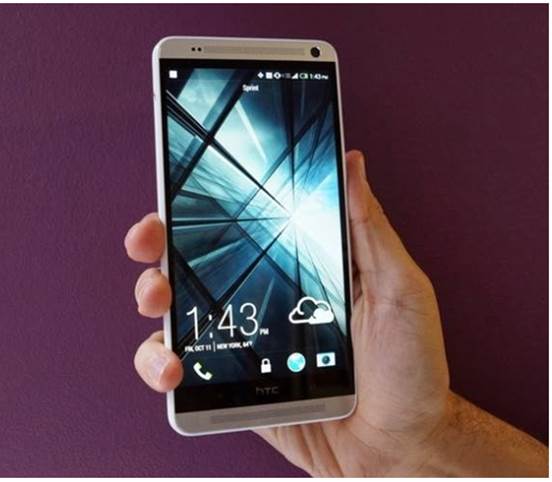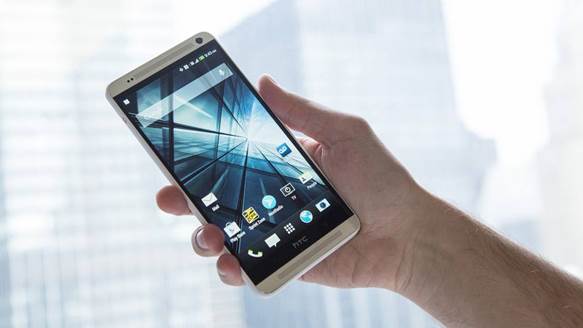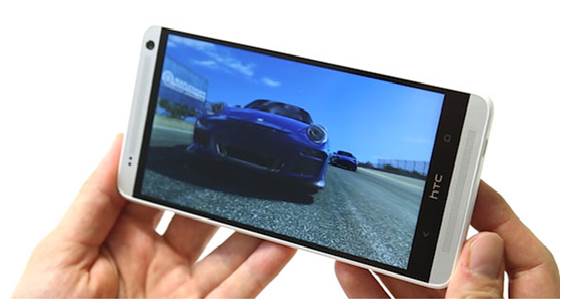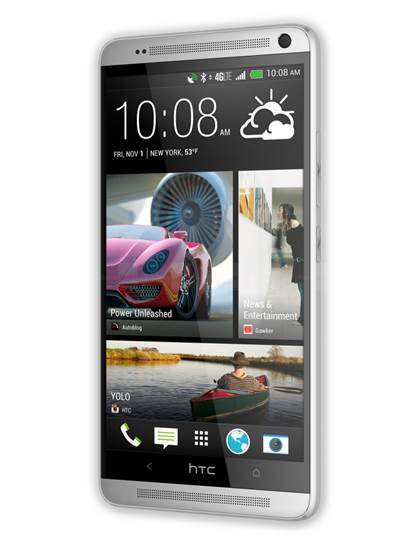HTC rounds out the One family with its take on the
phone-tablet hybrid phenomenon, the massive 5.9-inch One Max. But is this
behemoth too big?
A phablet is now something that every smartphone
manufacturer needs in its range. The One Max is HTC’s take on the phone-tablet
hybrid, packing the same design and build that has been so well received in the
rest of the One series in its oversized form factor. Does it offer enough to
compete with the likes of the Galaxy Note 3? We put the One Max strictly
through its paces to find out.

HTC One Max
Design
As the third member of HTC’s flagship One family, the Max
maintains the same design language as its siblings, albeit scaled up to
gargantuan proportions. The signature features are all there aluminum
construction in silver with white highlights, an imposing screen, dual
BoomSound speakers top and bottom and a pair of capacitive buttons for ‘back’
and ‘home’ flanking the HTC logo.

There's no getting
away from it, with a 5.9-inch screen, those capacitive buttons and the
BoomSound speakers, the Max is huge and certainly not for everyone. If you can
live with it though, it'll reward you
The Max is actually a scaled-up One Mini rather than a
resizing of the original One - it has the same white plastic edging as the
smaller device. While this doesn’t look or feel quite as premium as the
original, it does allow for a unique feature of the Max - the back panel is
removable to reveal the SIM slot and an oft-requested micro SD slot.

The pogo pins on
the back of the device enable you to attach the Power Flip case, which provides
another 1200mAh of battery in addition to the 3300mAh on board
The back of the device is home to HTC’s UltraPixel camera,
pogo pins for connecting to accessories such as the Power Flip case (a flip
case with a 1200mAh battery built in to the front) and a fingerprint reader,
situated just below the camera. Unlike the iPhone 5s, the reader on the Max requires
a ‘swipe’ motion on the sensor to read a fingerprint. It has been placed in a
‘natural’ position when holding the device in your hand, but it does make the
camera prone to smudging. It’s also not very good - we persevered with it for
the best part of a week before giving up and turning the feature off.
The power button on the Max has moved from the top to the
right-hand side, below the volume buttons. The IR transmitter remains on the
top with the 3.5mm headphone socket, while the micro USB port is on the bottom.

There's no Beats
on the Max, but there is still BoomSound, and boy do the speakers boom. The
physically bigger volume of the speakers makes for fantastically loud - and
clear – sound
While it’s nice to have micro SD support behind the removable
back panel, the downside is a slight drop in the quality of fit and finish. The
latching mechanism is pretty good, but some flex is introduced in the back
panel to the seamless design of its siblings, along with a particularly
noticeable edge at the top of the panel. With the One series’ previous focus on
build quality it is a little disappointing.
Screen
The One Max features a 5.9-inch SLCD3 screen at a 1920 x
1080 resolution, giving 373 pixels per inch. With separate capacitive buttons,
all of that incredible real estate is available to use for apps, the only
exception being when a legacy menu key is required - as on previous One
devices, an ugly black bar will then appear at the bottom of the screen
(although this can be disabled in the device’s display settings).

Shared design: The
Max shares many design cues with the rest of the One range - no bad thing in
our opinion
So what is the screen like? In a word, glorious. The screens
on both the One and the One Mini are stunning, and the Max continues the trend.
It’s bright with rich, accurate colors and excellent viewing angles - you’d be
hard pressed to find a better screen on any device. With the high pixel count,
you don’t really feel like you are downgrading the quality of the image in any
way if you transition from a smaller 1080p device. Regardless of your thoughts
on the size of the phone itself, the huge screen is extremely addictive. Going
back to a ‘normal’ phone after using the Max will make it feel like a toy in
comparison.

One of the best screens
around: Not only is the screen huge at 5.9 inches, it's excellent too. We
challenge you to find a better screen on any device
Unlike one of its key competitors - the Samsung Galaxy Note
3 - the One Max doesn’t include a stylus (or indeed anywhere to store one
inside the device). While a capacitive stylus will be available as an
accessory, HTC’s reasoning is that the best tool you have for manipulating the
screen is always right with you - your fingers. It’s hard to argue, for many
people the S Pen of the Note 3 probably goes unused, although if you are a
power user that really makes the most of the pen, then the Max might not be the
phablet for you.
The screen itself is incredibly sensitive to touch this
helps make the device feel very responsive throughout. It also works great with
gloves, handy as winter draws ever closer.
Performance and battery
The One Max includes the 1.7GHz Snapdragon 600 processor
with 2GB RAM, powered by a 3300mAh battery (the battery is not removable,
despite the removable back panel). This can be boosted to 4500mAh using the
aforementioned Power Flip case. In comparison, the Galaxy Note 3 from Samsung
packs a 2.3GHz Snapdragon 800 CPU and 3GB RAM with a 3200mAh battery. In the
hardware specs arms race this puts the Samsung device ahead, but don’t be
fooled - you’d be hard pressed to notice a difference in performance in real
world usage.
The Max feels incredibly snappy in use, with no slowdown no
matter how hard you work it. 2GB of RAM is still considered plentiful among
today’s devices, and no matter how hard you try, you’re unlikely to find
applications being swapped out due to low memory.
One of the benefits of Snapdragon 800 over its predecessors
is reduced battery drain, but thankfully the battery life on the Max is nothing
short of exceptional. In standby mode the device barely sips the power and even
when worked to the extreme, it noticeably outperforms most other devices
available today - not necessarily a surprise given that super-sized battery. A
regular HTC One will struggle to get us to the end of a long day, but the Max
will just keep on powering on to half way through the next. In this day and
age, that is a sta likely to impress many.